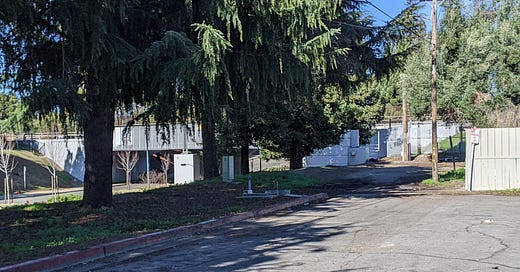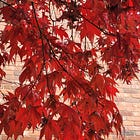Planning Commission Considers Trees
In Which: We update on the sudden resignation of HUSD Superintendent, Commissioners talk at length about outreach, And Commissioner Haman has conflicting thoughts about trees.
Reason For HUSD Resignation Still Unclear
Questions have swirled around the sudden resignation of former Superintendent Reimann earlier this week. After meeting in Closed Session on Wednesday, the HUSD Board of Trustees revealed that they had reached a settlement with Dr. Reimann where there would be no additional compensation for his release.
Interestingly, after the announcement, Trustee Bruckner-Carrillo referenced an “August Incident” as an explanation for why he recused himself from the discussion. He also mentioned that he immediately informed his work of the conflict—his day job is in the Alameda County District Attorney’s Office.
According to reporting from Steven Tavares at The East Bay Insider and The Mercury News, then-Superintendent Reimann was pulled over for driving under the influence of alcohol (DUI) on August 16th—the day after the regular school year began. He allegedly had a BAC of .15—double the legal limit—and was driving 20 mph over the speed limit.
When asked why the investigation was dropped simply due to Reimann’s resignation, President Bufete responded, “Investigations assess facts and determine appropriate school district responses, if any. With his resignation, there was no need to continue the investigation.” The President then said, “It is related to an alleged incident not connected to his responsibilities as a superintendent.”
Although all signs point to the August 16th incident, President Bufete told The Mercury News that, “their investigation focused on a ‘separate issue’ that would not be investigated further following Reimann’s resignation.”
Tree Preservation Keeps Moving
The Planning Commission met for the first time this year at the end of February to discuss the updates to the General Plan and the proposed Tree Preservation Ordinance. If you’re wondering why the Planning Commission is worth covering, it’s because almost all of the current City Council—at least 5 of 7—moved directly from the Planning Commission to the City Council. Everyone here are future City Council candidates and these meetings give you an idea of their priorities and vision for the City.
Commissioners Stevens and Meyers were absent for this meeting.
General Plan Slides By Without Comment
The Planning Commission got a presentation about the 2040 General Plan and how the projects are progressing. Although 35% of the projects are classified as “Not Started,” Staff said it was primarily due to budget and staffing constraints. There were many documents to read, covering a huge range of subjects.
The Planning Commission was given the chance to comment on how any of these projects were going or offer suggestions or recommendations on the General Plan. But aside from making sure when the Council would be talking about the Strategic Roadmap (March 8th), they made no comments on it whatsoever.
“I Want All The Trees”
The Planning Commission, yet again, gave feedback on the City’s proposed Tree Preservation Ordinance. At previous meetings, the Commission was largely unsupportive of some key parts of the Tree Preservation Ordinance, especially the idea of preserving native trees in backyards. Commissioners Franco-Claussen, Goodbody, Meyers, and Lowe all pushed back against what they called “government overreach” into rear yards.
The modified ordinance language still included preserving native trees in rear yards, however, but changed the way that the trees are preserved. The permit fee would be reduced for anyone removing two or fewer trees—which would cover the vast majority of homeowners—while also requiring them to replace the trees 2:1. The replacement trees would be much less expensive than paying for the assessed value of a mature tree, which could be tens of thousands of dollars.
From reading the previous language, very little beyond that actually changed. Things were, perhaps, packaged as changes or clarifications, but everything from the in-lieu fee—which would allow developers to pay to plant trees in a different location if they couldn’t preserve native trees on site—to incorporating canopy replacement into the planning review process, were all there before.
Making It More Than It Is
Commissioner Franco-Clausen asked for an explanation of how the in-lieu fees work. Basically, any trees that are cut down on a development site would be assessed for a dollar value by an arborist. Add all that together, multiply by 1.25, and that’s the in-lieu fee the developer would pay if they don’t replace it with a tree on-site. That money would then go into a fund that the City can use to plant trees in historically underserved areas or where more canopy cover is needed.
From there, Commissioner Franco-Clausen pivoted to complaining about trees in PG&E wires near her home on Sleepy Hollow. She alleged that one of the trees had caught fire and felt that the Tree Preservation Ordinance should cover this in some way. “I want all the trees,” she said. “I want to make sure that there’s trees everywhere.”
However, the Tree Preservation Ordinance is only meant to cover the removal of trees, not their maintenance. Also, PG&E already conducts inspections and does free tree trimming around their distribution lines. All anyone needs to do is contact them. Commissioner Franco-Claussen also brought up sidewalk maintenance and recommended the in-lieu fees cover that, as well. Staff let her know that the City already has a sidewalk repair fund that handles that for the whole city. Though they admitted, “it takes a while to get around to do them all.”
Regarding using the in-lieu fees to handle tree maintenance for residential street trees—which are technically the responsibility of the homeowner—Staff said that not only does Maintenance Services already cover tree maintenance, but “the amount of funding collected from the in-lieu fee… is about $100,000 per year,” they said. “[it’s] not really a significant amount in impacting the budget already set aside for doing that work.”
Commissioner Franco-Claussen continued to press the mater, however, saying, “I think we should think of all the different layers affecting trees in Hayward. Not just the canopy, but also the maintenance and how it impacts people in Hayward.”
Equity And Private Property
Commissioner Hardy asked about the 2:1 ratio of replacements to removals and why that was in place. Staff said that it was important to actually grow the canopy instead of just maintain it. “What we are trying to do is just ensure that a tree is mitigated,” they said, whether it’s by direct replacement or in-lieu fees.
When asked how Staff was going to monitor removals to ensure people were following the ordinance, they shrugged and admitted reality. “There are trees that are removed without a permit that we never hear about,” they said. “That’s the reality of what’s happening.” They also said that neighbors frequently report illegal removals and that it is a Code Enforcement issue.
Commissioner Hardy asked about the equity of the permits and penalties—which are double the permit fee—Staff reminded her that there will be a sliding scale enacted. Right now, it is a flat fee, but they plan to make it much cheaper to remove one or two trees, which is what homeowners usually do, and charge more for larger removals from developers.
Commissioner Goodbody asked how the City is assessing the canopy cover to know where to plant trees. Staff said that they can’t do it yet, but they have a contract with a vendor who will be doing an assessment and develop a tool to help them do that soon.
“How do you define private property rights?” Commissioner Haman asked. “I’m not sure how do I answer the [question about] private property rights…” Staff responded. Commissioner Haman seemed to get hung up on a line merely explaining that Staff tried to balance public needs with private property rights. He also asked if Staff thought that the in-lieu fee of 125% of the value of the tree was enough. Staff responded that it was, based on their analysis.
Financial Burdens and Communications Plans
Chair Lowe expressed support for the sliding scale. “I was very concerned that Hayward residents would have an undue financial burden.” She was supportive of just about everything else, though.
Commissioner Hardy, as she has done before, brought up community outreach—revealing that Community Outreach was a former job she held—and floated multiple ideas for how information on the ordinance should be distributed. “I hope we can make this a celebration,” she said.
While this was not a part of the discussion they were supposed to be having, Commissioner Franco-Clausen also talked at length about different ways to do community outreach. Commissioner Goodbody followed suit, asking Staff to consider leveraging the Keep Hayward Clean and Green Task Force.
Commissioner Haman Flips and Flops
Going line by line through the Ordinance, Commissioner Haman pressed for a list of acceptable trees to be included in the ordinance language—despite earlier hearing from Staff that it was a bad idea because information changes. He then expressed concern about property rights again. “I believe that the violation of the code raises a lot of questions about property rights,” he said, “and the ability to maintain those trees and the ability to pay the penalties. I believe this would probably need further discussion.”
He then expressed concern about the penalties for not following the ordinance, seeming to think they weren’t harsh enough. “[I wonder] if the policies have enough bite to them to keep people from going ahead and cutting their trees down or topping them irresponsibly.” Commissioner Haman went so far as to wonder if a Misdemeanor was a serious enough offense for removing a tree. It’s unclear if he knew that the severities of crime are only infraction, then misdemeanor, then felony.
Then, despite earlier being concerned about private property rights, Commissioner Haman then flipped positions entirely. “If we are to grow our canopy, we’ll need to expand where we plant trees and to protect trees even if they are located in our backyards,” he said. “The needs of the many outweigh the needs of the few.”
Commissioner Haman then immediately raised concerns about the damage more trees could do, with particular focus on issues which only affect residents in the heavily wooded Hayward Hills area. “[Raising] the risk of wildfire, overloading our present storm drain infrastructure, future solar panel needs, and how it affects insurance coverage… We also need to consider the cost of a view.”






